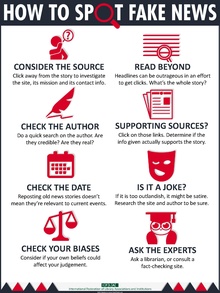gz628315@ohio.edu
If you are reading this, you have probably been exposed to fake news at least once this week. If you can read, you have fallen victim to it in your lifetime. Fake news is a newer concept that has become more prevalent in today's news with the rise of social media. With it being such a familiar concept within the past few years, it is important to know who all is affected by fake news? Here are just a few:
How is the reader affected?
As you sit down to read an article or a story, you automatically assume that what you are about to look over is factual. As you start to get deeper into the context, there might be things that stick out that lead you to believe the story is fake; however, many times, this is not the case. According to a study done by Statista, only 27 percent of respondents felt that they are very confident in being able to spot fake news. This is an extremely low number considering the number of people in the United States and the amount of news that is consumed every day. The study also showed that 49 percent of respondents are somewhat confident in being able to spot fake news. These numbers show that if a news outlet was to publish a fake story, many do not feel confident in their ability to know if it is real or fake. This can affect the reader's ability to get real, factual information.
How are the people in the story affected?
Imagine a story being written about you or someone you know, but all of the facts in the story were made up. How would that story impact your life, and how would it change the way people perceive you? Whether the story shows you in a good light or not, it is still bringing attention to you based on false information. For example, according to the Columbia Journalism Review's article "The Victims of Fake News," after the Sandy Hook school shooting, fake news stories were being written about the parents of the victims. These articles talked about how the shooting never happened and that the parents of the victims were "frauds." This caused the victims' parents to receive a lot of backlash, like death threats. This shows the impact a fake news story can have on those involved in the context.
How is the platform the story was released on affected?
A publication sharing a fake news story can be just as easy to blame as the writer himself. When a fake news story is put onto a platform, it can shake the public's trust in that publication. Typically, news comes from trusted publications and journalists. Many newspapers and magazines have codes of ethics and procedures that they use to spot fake news. With the rise of social media, anyone can publish fake news, and anyone can read fake news. If someone reads a fake news article on a random website, they are likely to not use that website as a future news source. So what is the difference if The New York Times published a fake news story? Would one be able to trust them with future news? Once that trust is broken, there is no going back.
There are many others affected by fake news stories that were not mentioned here, such as the writer of the story, the government, the place in which the story takes place, etc. As future journalists and public relations professionals, it is important to know the impact fake news can have on everyone.

No comments:
Post a Comment